Mahjong Riichi - Case Study
Gerard Konopielko, Iga Kostecka, Wiktoria Niewiedziała
Problem
Mahjong Riichi is a Japanese four-player tile-based game with fairly complicated rules. Because of these complicated rules, especially regarding scoring and the extensive terminology, it is unwelcoming to new players.
Solution
With this project, we aimed to create a digital Mahjong manual that allows newcomers to start playing.
Introduction
The project started in December 2023 and ended in July 2024. We met 16 times to work on the project, averaging one meeting every two weeks.
We started the project by mapping our hopes & fears for the project, as suggested in the IBM Enterprise Design Thinking Toolkit. We mapped stakeholders for this project: the people who will use the manual, the people we interview, and ourselves. It was important to take into account that there was no funding, and we were major stakeholders; many student projects fail because they don’t realize that. That’s why mapping the project’s hopes and fears was our first step. Because of that, mapping the project’s hopes and fears was our first step. In the begging we already had some assumptions about the project, but going further we also got some questions. We decided to write them down and mapped them on a certain/uncertain, high/low-risk chart. Doing so, allowed us to think about ways to resolve problems, especially regarding scheduling meetings and ensuring we were assigned on different elements of the project.
Roles
The three of us contributed to all parts of the project, but we also assigned responsibilities for each part to a different person. Gerard was the project lead and responsible for the implementation, Iga was responsible for research, and Wiktoria was responsible for branding and illustrations.
Research
Interviews

We started our project research by conducting 15 thirty-minute interviews. We asked people about their preferences when it comes to board and card games and their interests in general. When it comes to games we had questions about the context in which they usually play in, what types of games they prefer, how they learn the rules, and when they decide to play a new game. We also asked them if they had heard of Mahjong, played it, and if the answer was positive, how they learned the rules. We decided to ask whether they played Poker, and if they did, how they learned the rules (since Poker, while being less complicated, shares some resemblance with Mahjong when it comes to rules).
Persona
Based on the interviews, we came up with our ideal persona.
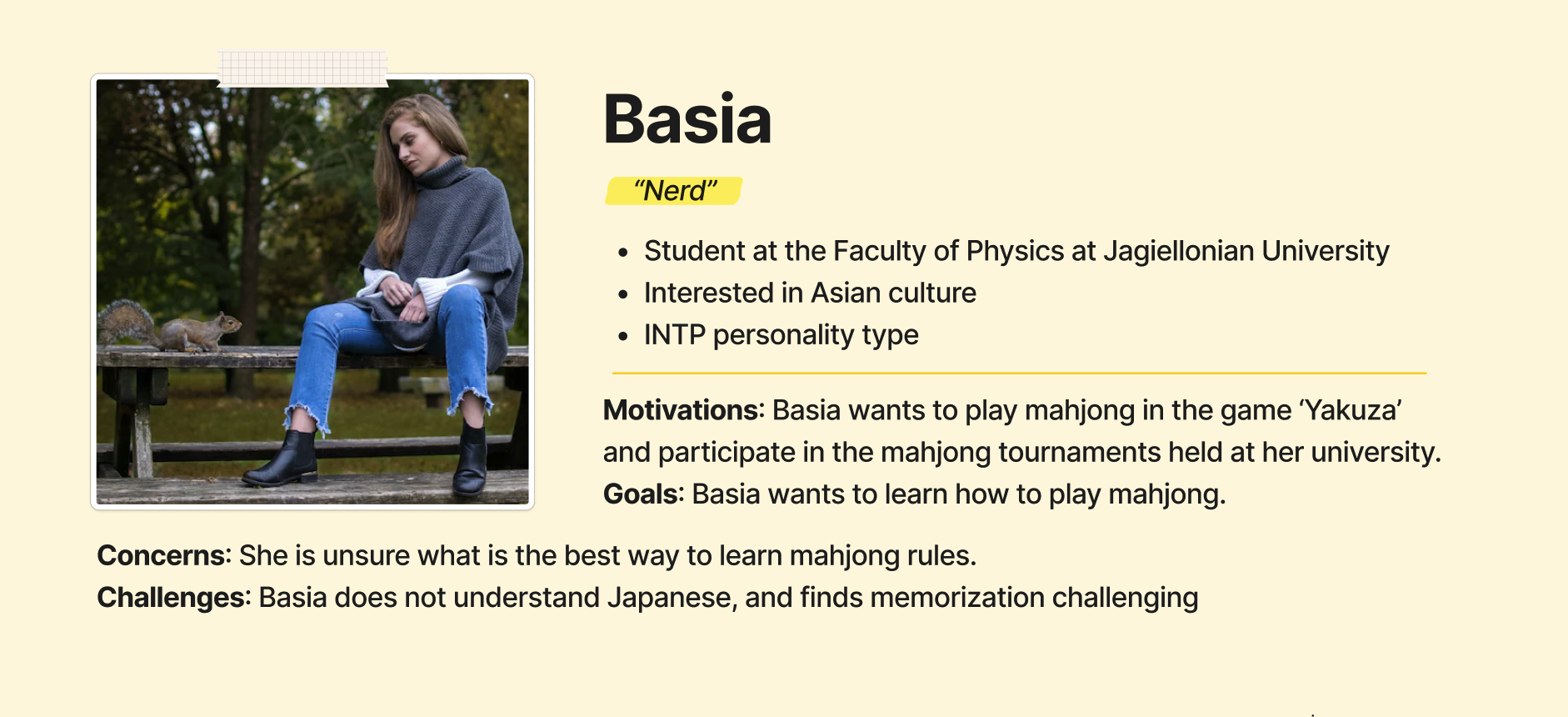
Competitors
We then decided to explore other solutions for learning Mahjong rules. We created a table listing different solutions, along with their advantages and disadvantages.

Strategy
For the strategy, we utilized a template from the book "Writing Is Designing: Words and the User Experience". This allowed us to define our scope using the MoSCoW method.
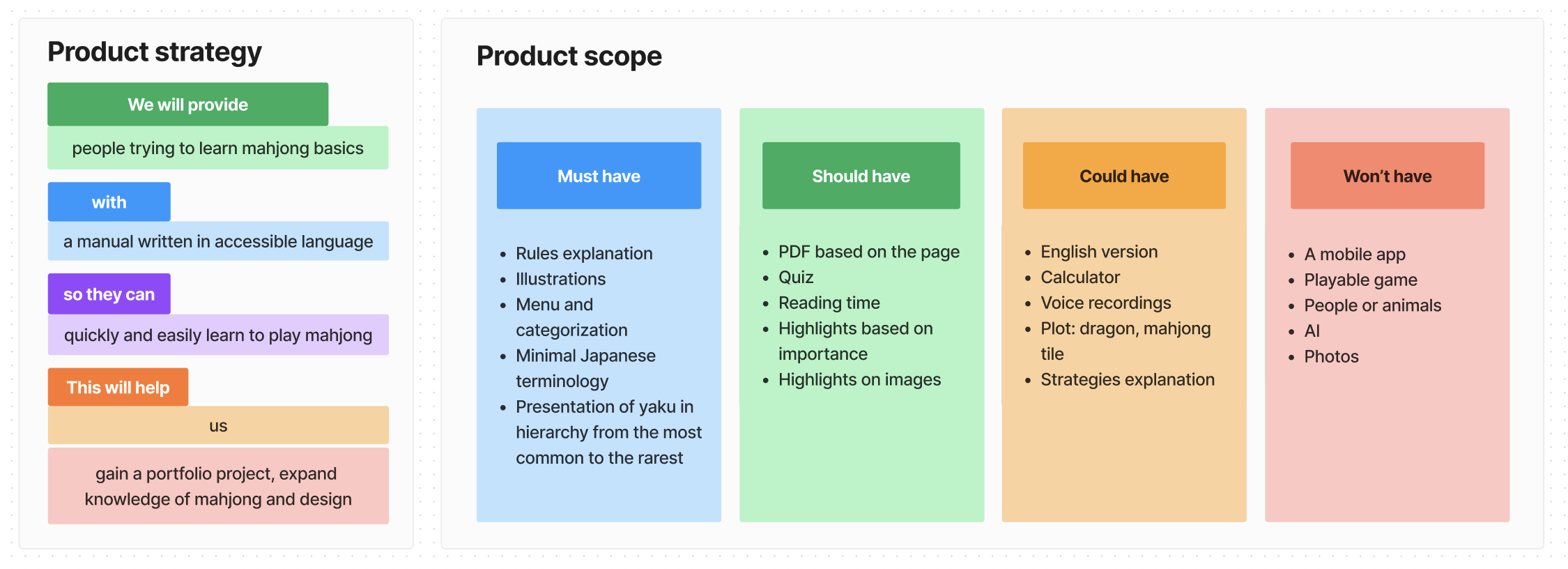
LoFi
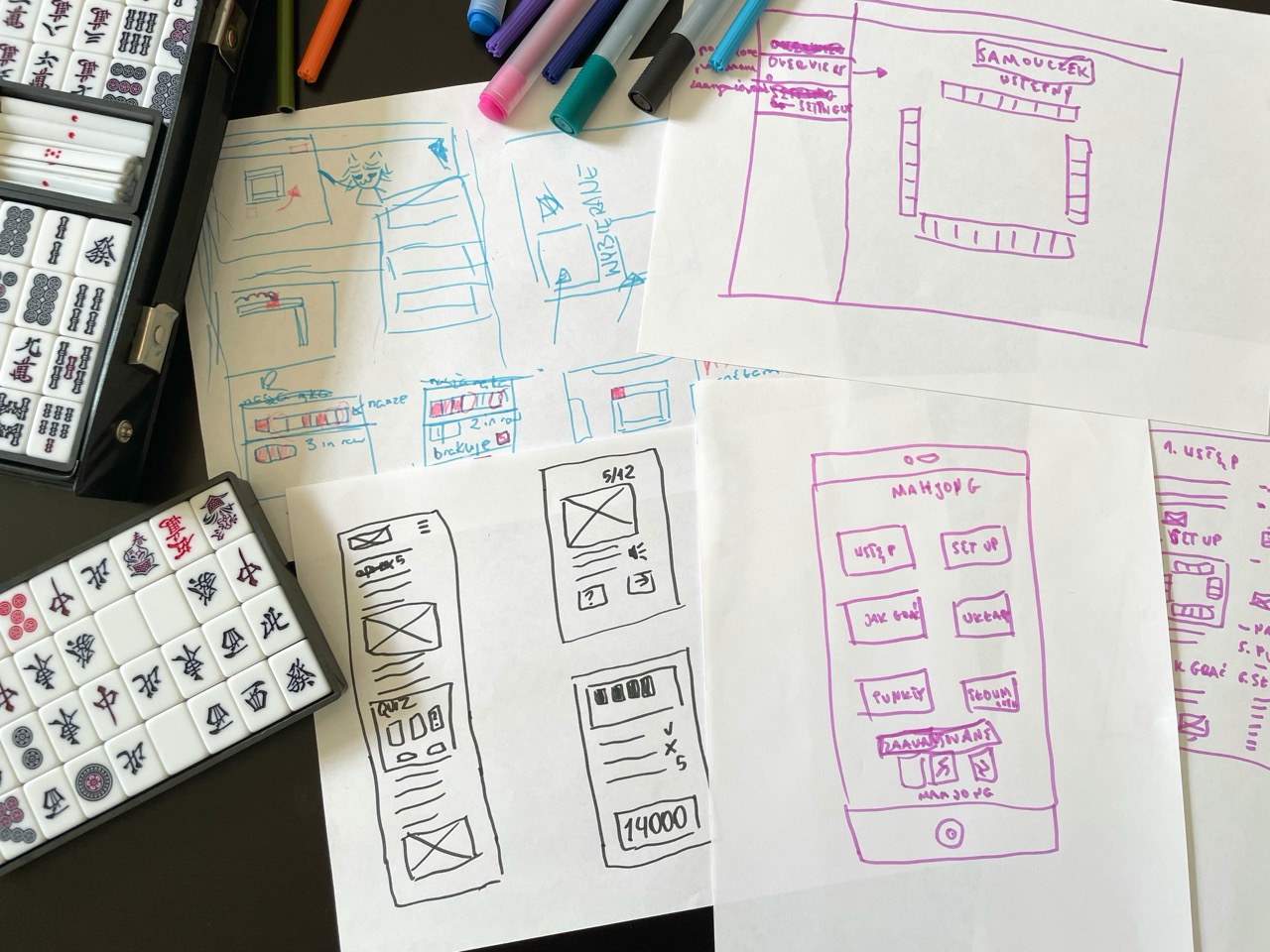

Content
Questionnaire
One of the most important parts of this project was the actual content of the website. We compared how different game manuals are written and read multiple articles on writing game manuals. Then proceeding with creating a questionnaire to learn which words would be most appropriate and which were most commonly used in the context of board and card games.
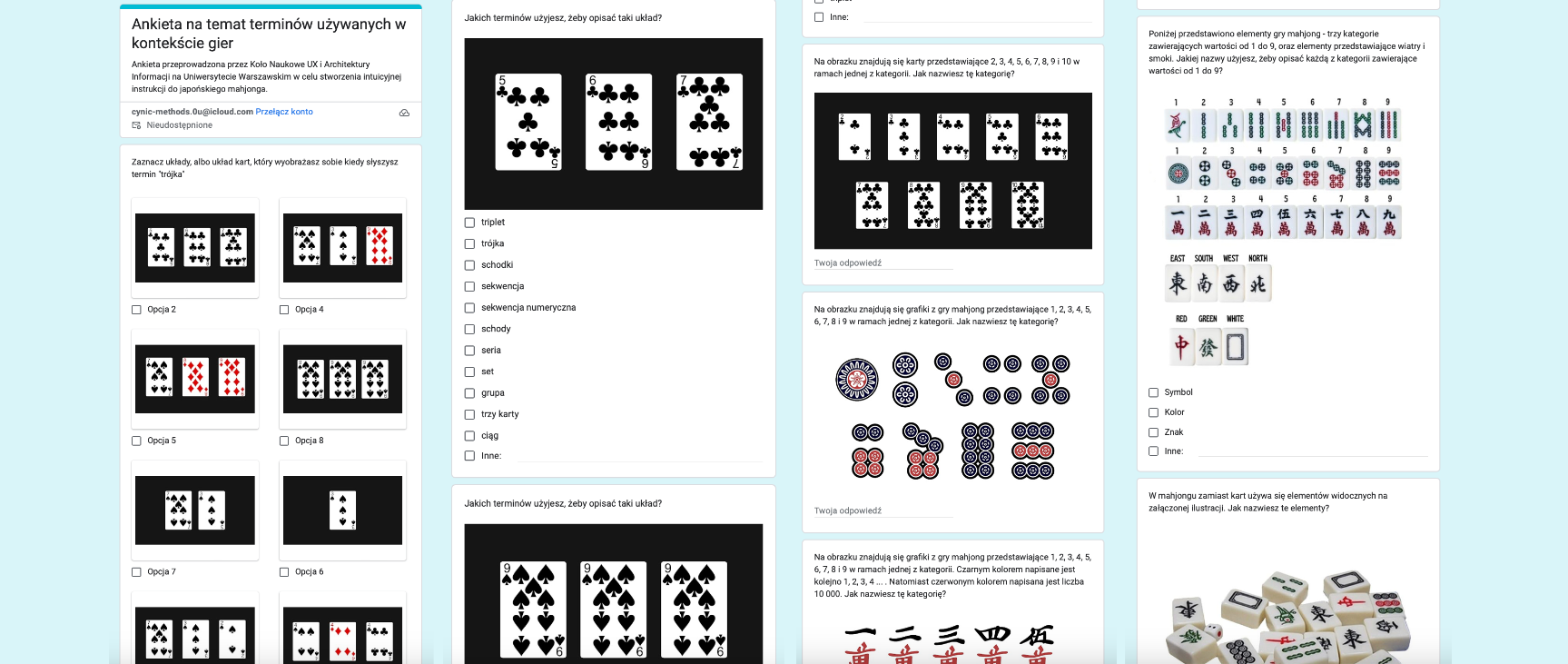
First drafts
The first website draft was made using Docusaurus as the CMS. After this implementation we had 3 iterations where we gave each other feedback on the parts each of us was responsible for.
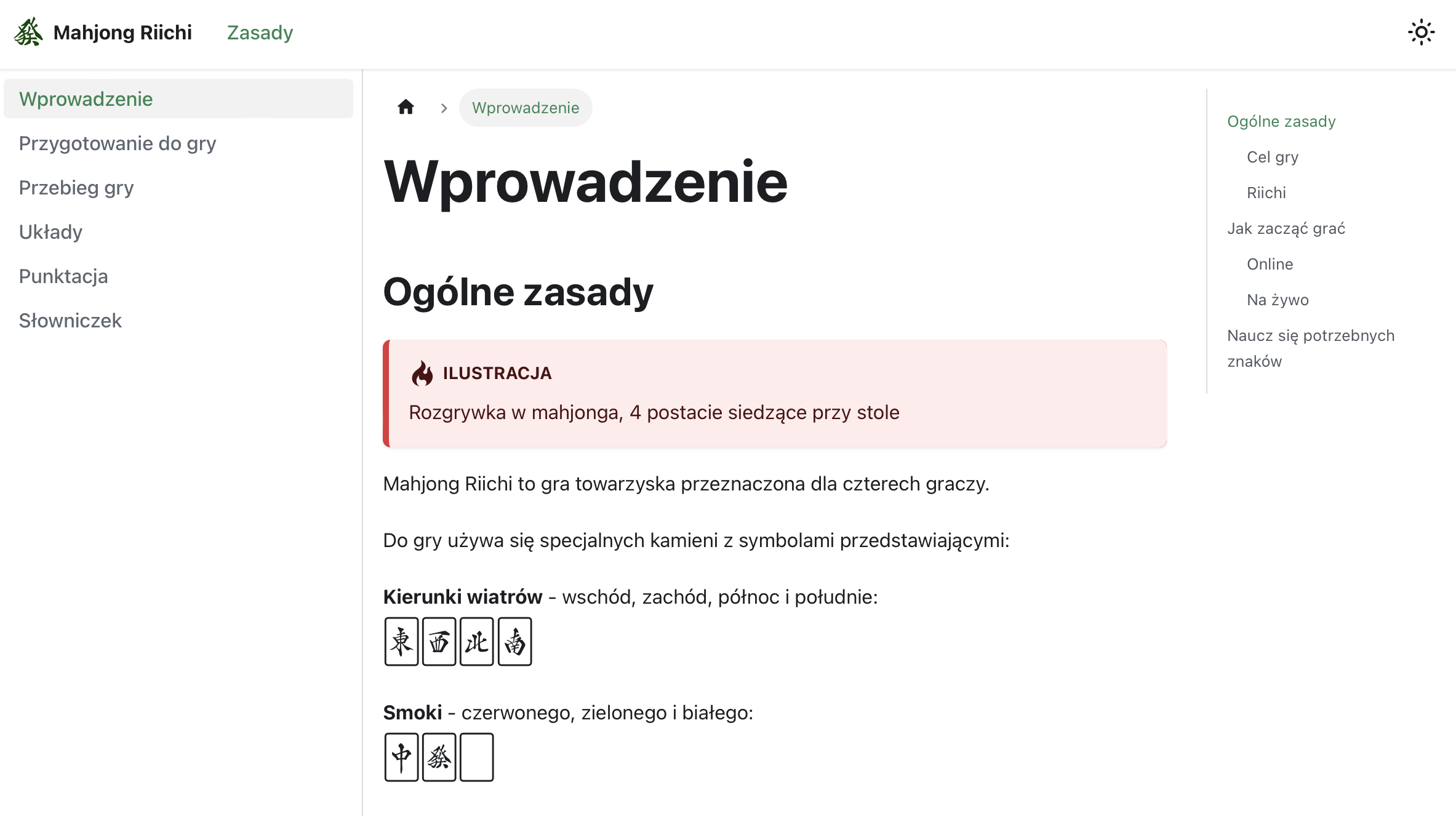
Interviews
After creating a prototype, we interviewed 8 people. Each interview took between 1 and 1.5 hours. We asked people to read the content of our webpage, then asking them to answer few questions regarding every section. In the end, they were asked to play one short game of Mahjong, as well as count points for two mahjong hands. After every interview, we transcribed them, wrote down insights, and implemented changes. All 8 interviews resulted in a total of 110 tickets.
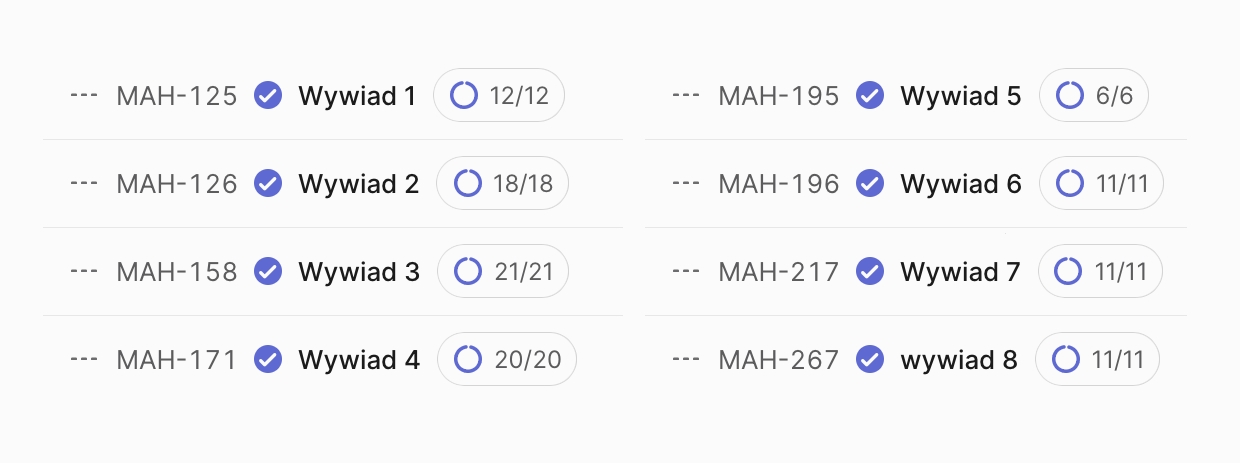
Branding
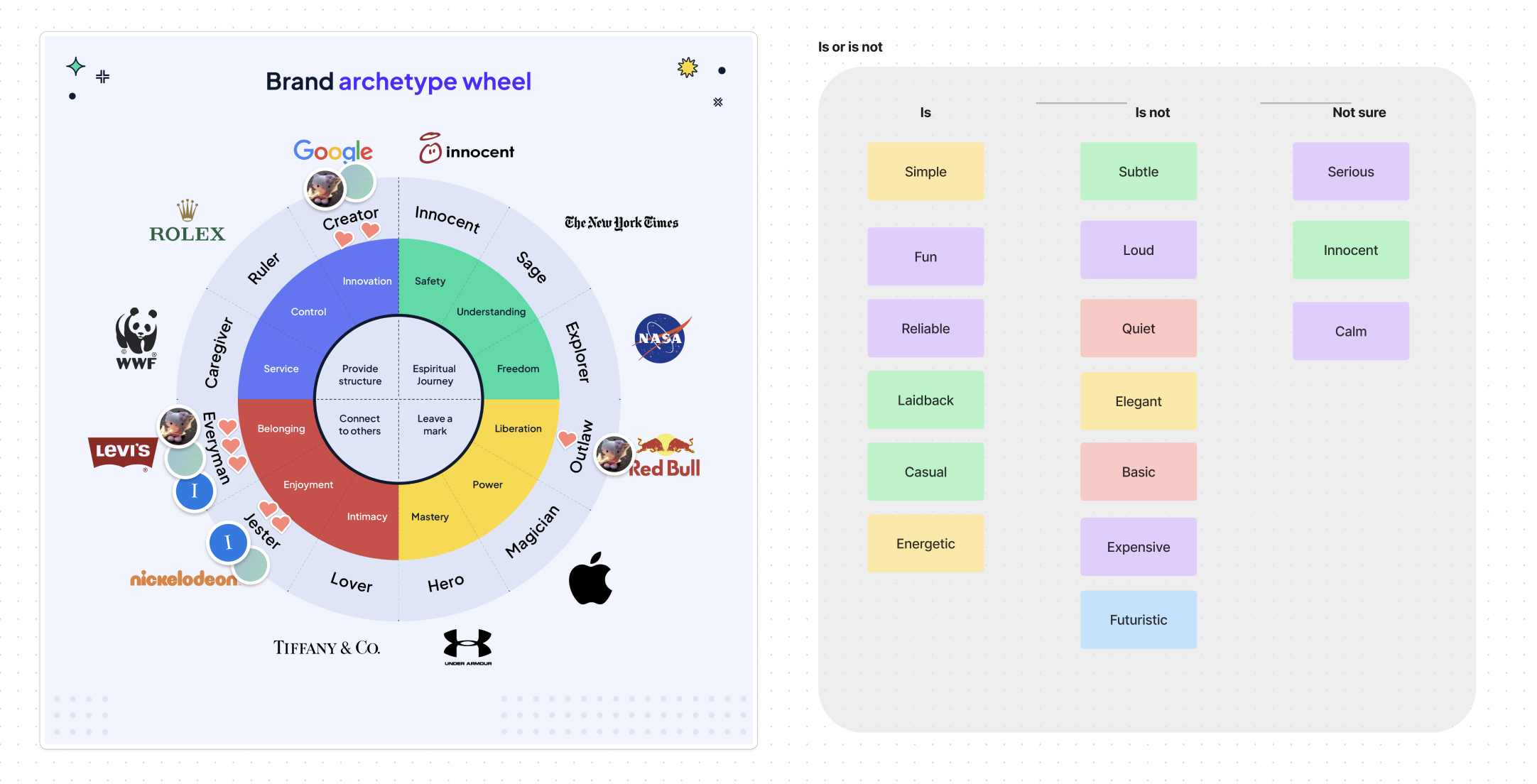
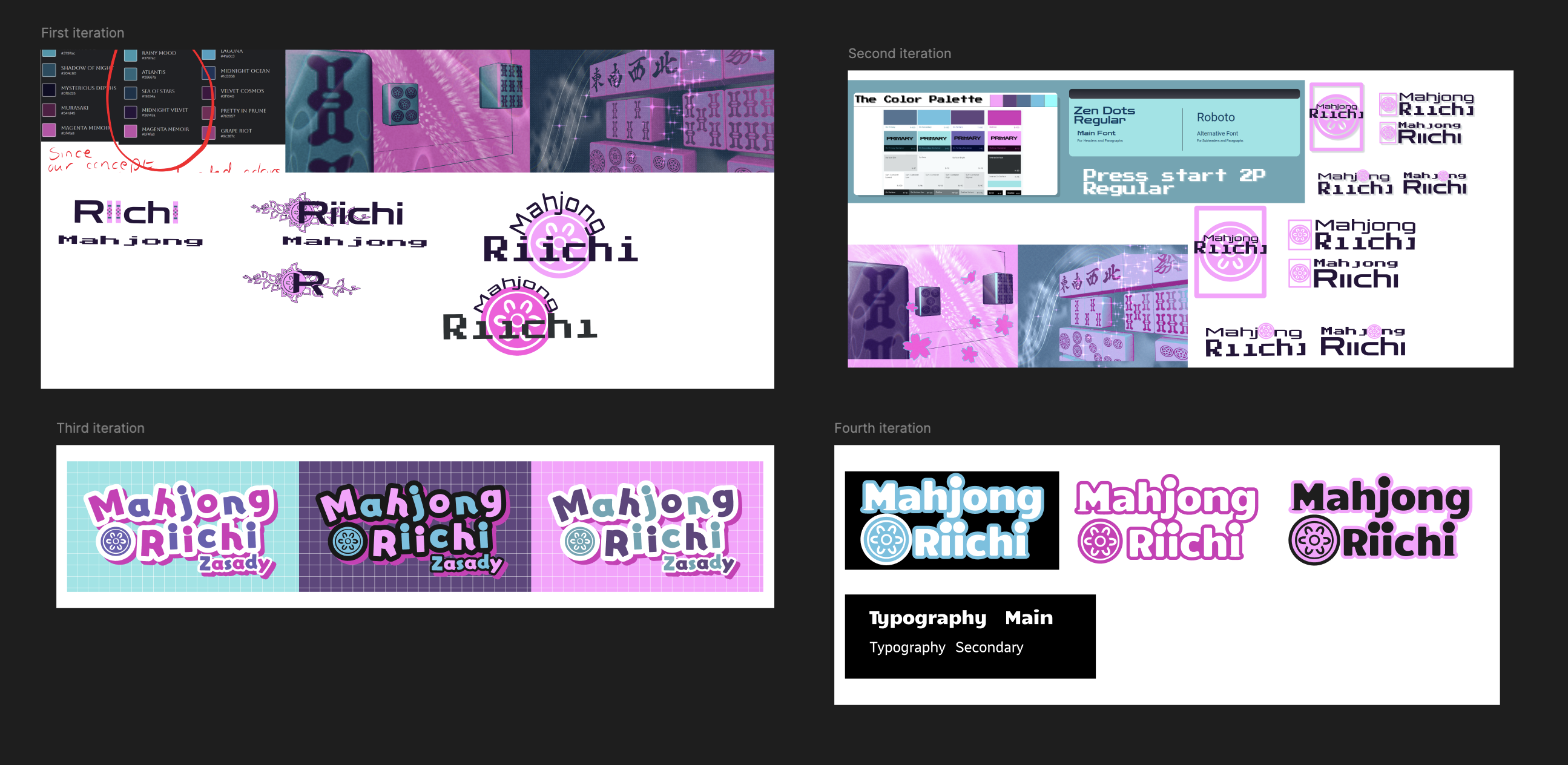
HiFi
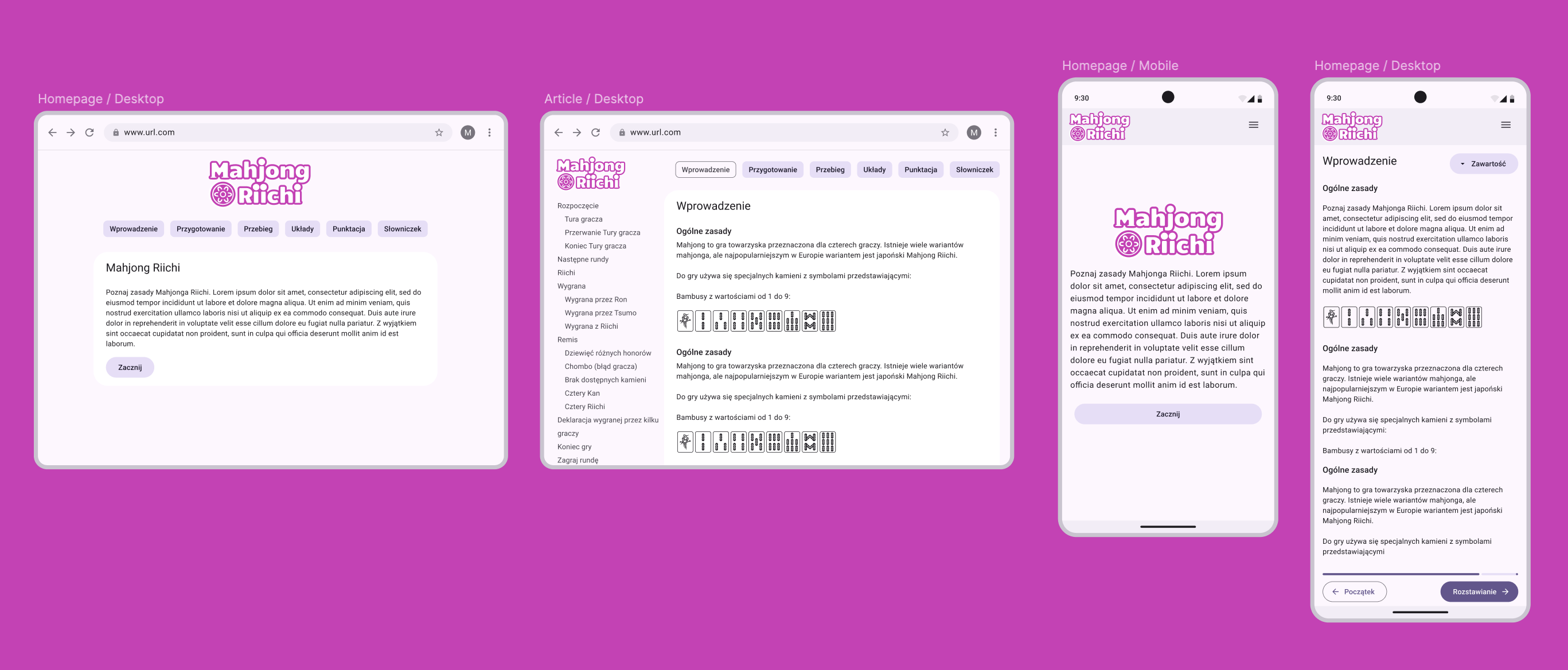
Learnings
Throughout the Mahjong Riichi project, we encountered several key learnings that have shaped our approach to UX design and project management:
- User-Centric Iteration: Iterative design based on user feedback proved crucial in refining Mahjong.edu.pl. Our initial assumptions about user needs evolved significantly through interviews and testing sessions. This iterative process not only improved usability but also deepened our understanding of the complexities involved in learning Mahjong.
- Importance of Comprehensive Research: Conducting thorough research, including stakeholder mapping, competitor analysis, and persona development, laid a solid foundation for our design decisions. Understanding user preferences and learning behaviors enabled us to tailor content and features effectively.
- Collaborative Team Dynamics: Assigning roles while maintaining a collaborative environment was essential. Each team member contributed expertise while being involved across all project phases. Clear responsibilities ensured tasks were completed efficiently, despite challenges such as scheduling and resource constraints.
- Adaptability and Flexibility: Flexibility was key in navigating unexpected challenges, such as adjusting timelines and scope based on feedback and evolving project needs. Embracing change allowed us to continuously improve the product without compromising on quality or user satisfaction.
- Effective Communication: Regular meetings and transparent communication facilitated alignment and decision-making within the team. Clear communication channels ensured that everyone stayed informed and engaged, enhancing productivity and cohesion.
Results
Through this project, we successfully addressed the challenge of making the game accessible to newcomers. By creating Mahjong.edu.pl, a digital manual, we aimed to simplify learning and playing Mahjong. Our journey involved a lot of research, iterative design improvements, and extensive user testing. Based on insights from user interviews and feedback, we refined our content and interface to enhance user understanding and engagement.
This project has not only equipped us with valuable UX design skills, but also reinforced the importance of user-centric design in creating impactful digital solutions.
We also want to extend our gratitude to all the people involved, whose support and insights were invaluable. It gave us boundless inspirations in shaping Mahjong.edu.pl into a user-friendly resource for Mahjong beginners.
See the result